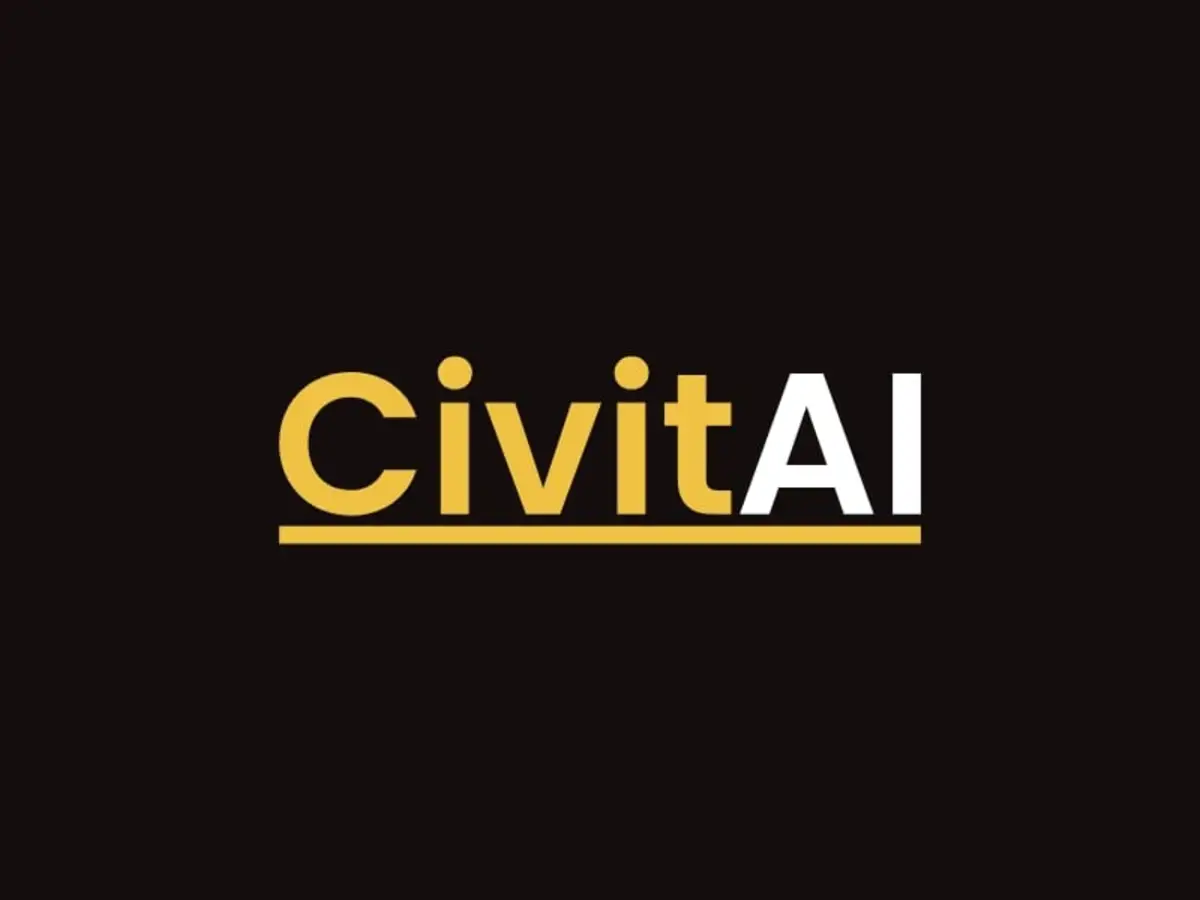Explore The World Of AI With Civit AI Tools And Ideas For Everyday People
Not a coder? Not a tech bro? Doesn’t matter. You’ve seen the viral AI images, the hyperrealistic portraits, the sci-fi 3D avatars—and somewhere in that scroll-heavy hole of the internet, you wondered: “How do I get in on this?” That’s where Civit AI flips the script.
This platform didn’t come out of some Silicon Valley megacorp—it was built for creators, hobbyists, small businesses, and even curious teens tinkering on a Chromebook. Launched in 2022 by Justin Maier, Civit AI is what happens when the open-source community goes full throttle with generative AI—and for once, regular people get to play.
Go beyond buzzwords. You’re not just “generating content.” You’re remixing culture. Owning the tools. Racing ahead with tech that used to be locked behind seven-figure R&D budgets. Civit AI is where models, imagination, and people collide. And it’s growing like wildfire. Here’s how it works.
How It All Started And Why It Blew Up So Fast
In 2022, while the AI world was still geeking out over GPT-3 and image-focused models were making niche rounds on Reddit, a guy in Boise, Idaho saw something bigger.
Justin Maier didn’t set out to build another automated tool for Big Tech investors. He created Civit AI so anyone—regardless of coding fluency, photo-editing skills, or hardware budget—could jump into the generative AI revolution. A year later, the platform went from a quiet whisper in dev communities to a booming ecosystem of millions.
Why? Civit AI did the one thing few tech efforts dare—it opened the gates.
While others charged for cloud access or locked model weights behind accreditation checks, this platform gave users the resources to build, reshape, and monetize creative AI tools—and showed the industry what true open-source power looks like.
Key Features That Make Civit AI A Go-To Platform
When people talk about “AI disruption,” they usually mean complex infrastructure and inaccessible R&D labs. Civit AI flipped that definition through these core features:
- AI Model Playground: The site supports big names like Stable Diffusion and Flux, letting anyone create ultra-detailed images through simple text prompts.
- Tool Repository, No Downloads Needed: From text-to-image to 3D model generation and even video synthesis, everything runs natively—your browser becomes a full-on generative lab.
- On-Platform Monetization: The built-in marketplace lets users earn and trade using Buzz, its virtual token. Whether you’re selling AI-generated avatars or custom LoRAs (Low-Rank Adaptations)—you can profit with a few clicks.
- Customization at Scale: LoRAs make it possible to train personalized versions of major models without beefy GPUs. This means niche tasks—like stylizing a video game character or building a fashion preview tool—can happen from your home laptop.
Here’s a quick breakdown of what users can expect when they dive into Civit AI’s toolbox:
| Feature | What It Does | Who It’s For |
|---|---|---|
| Text-to-Image Generation | Transform written prompts into high-res visuals | Digital marketers, visual artists |
| Text-to-3D Models | Create sculpted models from a phrase or concept | Game developers, product designers |
| AI Video Generation | Synthesize short-form media clips with prompts | Content creators, YouTubers, brands |
| Custom LoRAs | Train lightweight, tailored AI models fast | Coding-light creatives, AI tinkerers, educators |
Civit AI has made daily image creation feel less like machine learning and more like storytelling with superpowers.
The Numbers Behind Civit AI’s Meteoric Rise
Let’s cut through the shiny features—it’s the community that gives Civit AI real backbone. By January 2023, they had 100,000 registered users. Less than a year later? Over 3 million.
That kind of hockey-stick growth doesn’t happen by accident.
As of April 2024, their monthly access clocked in at 23.2 million—people aren’t just dabbling, they’re sticking around. Sessions average more than 11 minutes, with the United States making up nearly a quarter of all traffic. That’s not typical window-shopping; that’s deep engagement.
The real kicker? It’s open-source.
This isn’t some black-boxed walled garden—users actively contribute features, fix bugs, and trade improved models like digital legos. Civit AI isn’t just a platform. It’s a playground where community isn’t marketing speak—it’s product infrastructure.
For anyone chasing creativity and computing without waiting on permission, this is where you land.
And if you want to explore more about the backbone behind this AI movement, check out the [Civitai Wikipedia article](https://en.wikipedia.org/wiki/Civitai?utm_source=openai) to dive deeper into how it’s shaping the future of accessible generative tech.
Civit AI and Digital Marketing Revolution
Leveraging Generative AI for Content Marketing
What if your most time-consuming campaign assets could be built in half the time—without sacrificing quality? That question is exactly where most marketers meet Civit AI.
Across industries, digital marketers are tapping into this platform’s open-source model library to create everything from eye-popping visuals to low-budget video ads that stand out in oversaturated feeds. Civit AI offers access to models like Stable Diffusion and DALL·E, helping creators generate custom imagery tailored to brand identity—often faster than waiting for a designer’s first draft.
It’s not theory—it’s already in motion. One boutique agency in Austin used Civit AI tools to build 20 infographic variations in under four hours for A/B testing. Another fashion retailer launched an entire seasonal campaign using AI-generated banner ads trained on past engagement data—and doubled their clickthrough rate within days.
What makes this shift real is the volume and control. Marketers can now feed in branded prompts (“moody, high-contrast skincare photos for Gen Z feed stories”) and instantly get assets ready for deployment. No plug-ins, no outside apps. Trend-inspired, on-brand, and optimized.
But with the speed comes the latent question: does faster mean better—or just more? That’s where the next AI chapter begins.
Social Media Strategies Empowered by AI Trends
Social media isn’t just built on memes and moodboards anymore—it’s powered by predictive visuals and algorithmic instincts. Civit AI’s ecosystem is giving content teams the edge they didn’t know they needed.
Creators are going beyond static images, using Civit AI to auto-gen animated loops, virtual model influencers, and mid-scroll thumb-stoppers built from LoRAs (Low-Rank Adaptation models) trained on niche aesthetics. Instead of copying a trend, brands can now generate something genuinely fresh based on trend data scraped and visualized inside the platform.
AI-savvy marketers are layering it with engagement analytics, tweaking creative impressions and adapting visuals based on live feedback. One sports brand reported a 40% lift in follower interactions after tailoring image style on Civit AI to match regional audience preferences.
From TikTok covers to Stories-specific intro frames, the strategy has shifted: create fast, iterate faster, and let AI fill the breakneck gaps.
Challenges in Implementing Digital Marketing AI
For all the hype, working with generative tools like those offered on Civit AI isn’t plug-and-play paradise. There’s tension—an undercurrent of discomfort as creators wrestle with the implications of synthetic content.
First, there’s the originality concern. Agencies worry they’re producing aesthetic wallpaper masquerading as creative output. If everyone uses the same tools to produce “unique” content, do brands blur into the same AI-flavored haze?
Then, there’s the designer dilemma. Internal teams are questioning if their skills are being replaced—or just repackaged. Digital strategist Maya Rose, who’s run creative across three major CPG brands, said it bluntly: “Civit AI helps me keep pace, but sometimes I wonder if I’m now just curating a robot’s work.”
That emotional push-pull can’t be dismissed. While the tools save time, some creatives say it muddies authorship. If a campaign’s visual hook was co-built by a downloadable model trained on scraped art, who really owns the result?
Ethics questions aside, there’s a practical layer: AI output still requires review for bias, weird glitches, or off-brand themes. Total automation isn’t here—and maybe that’s a good thing.
AI Startups: Unveiling New Trends Through Civit AI
Analyzing Emerging Startups
Scroll through the trending models on Civit AI, and you’ll find something electric: a new class of AI startups that are ditching legacy baggage and rebuilding the future of content from scratch.
From self-trained 3D model generators to lightweight diffusion models made for browser-based tools, these early-stage startups are using Civit AI not just as a repository—but as a launchpad. The open-source ethos gives them room to experiment without licensing overhead or API bottlenecks from larger players.
Take VizCraft, a two-person startup in Prague. They built a facial animation plugin for indie game devs using LoRA datasets shared through Civit AI’s model exchange. Within six months, they racked up thousands of downloads, an angel round of funding, and a Discord following of modders eager to extend it.
Another example: Narratek, a micro-studio from Toronto, used the platform to train culturally responsive avatars for digital educators. Their models hit the top ranks in Civit’s engagement charts, attracting collaborators from schools and accessibility labs worldwide.
This isn’t just growth—it’s reinvention powered by shared infrastructure.
Industry Transformations and Opportunities
Civit AI is quietly reshaping how industries scout, validate, and amplify AI innovators.
Where once founders waited months for exposure, now their projects can blow up overnight inside an engaged, technical community. Foundational trends reveal a surge in tools designed for:
- Marketing automation plugins trained on niche buyer personas
- Voice-to-animation converters for quick educational outreach
- E-commerce personalization assets generated through product description LoRAs
It’s not just about building models—it’s about models becoming catalysts of community, influence, and investment. Civit AI has become a visual marketplace of possibility, and startups are taking that visibility to VCs, accelerators, and public demos with proof in hand.
AI Policies and Research Breakthroughs
Policies Governing AI Innovation
The glow of innovation often casts a long shadow—and Civit AI is embedded in the current debate over how AI platforms must be governed.
Amid rising concerns over deepfakes and synthetic influence models, Civit found itself forced to impose stricter NSFW moderation, particularly around celebrity likenesses. That shift wasn’t proactive; it came after pressure from Visa and MasterCard forced changes to avoid financial blacklisting.
But the policy pivot goes deeper. Hidden behind a cheerful community page and decentralized buzz economy is a question of identity governance. What happens when user-uploaded content includes LoRAs built from realistic datasets of real people—without consent?
Under updated terms, Civit flags and hides anything tagged with “POI” (person of interest) if it implies real humans. Yet, enforcement still falls on review volunteers and automated tagging—not guaranteed checks. Until regulation matures, accountability sits somewhere in the grey.
More troubling is what surfaced in blockchain.news and sector-specific reports: a period where users openly commissioned deepfakes in a bounty marketplace model. While that feature is now gutted, its existence highlights an oversight gap that current digital policy isn’t equipped to close.
Civit AI’s open-source backbone makes it fertile ground for progress—but also raises urgent questions about how global licensing, privacy rights, and generative model ethics must evolve in tandem.
AI Research Insights and Controversies
Academic scrutiny of Civit AI holds nothing back.
A detailed study on arXiv exposed serious concerns around the platform being a distribution point for misogynistic, unethical generative content. Using scraped data and tagging patterns, researchers showed how non-consensual AI outputs proliferated with minimal friction—raising specific flags about content involving deepfaked public figures and graphic scenarios.
Another study explored moderation pathways on the site, finding that Civit AI’s reliance on community policing and limited paid staff failed to catch hundreds of abusive uploads weekly. In the absence of fine-tuned filters, bad actors exploited model tags and renamed LoRAs to bypass detection.
At its core, the controversy isn’t about the tool—it’s about unchecked use. Facilitating open creative freedom without active boundaries risks turning innovation into infrastructure for abuse.
Fixes exist: clearer model licenses, codified incentives for ethical uploads, and stronger review panels. But community mechanics alone won’t cut it.
Ethical Challenges in Generative AI
What happens when tools built to inspire end up hurting real people? That’s the tension sitting at the core of Civit AI’s ethical crossroads. Content creators on the platform are using LoRAs—Low-Rank Adaptations—to generate eerily realistic depictions of celebrities. Some do it for satirical art. Others, not so innocently, for deepfake adult content. That line? It’s blurry. And in Civit AI’s early growth phase, it got crossed. Repeatedly.
Back in 2023, users were earning virtual currency (Buzz) by fulfilling “bounties” to create “realistic” images of fictional and real personalities. The impact was immediate—public backlash, exposed moderation gaps, and eventually, pressure from financial giants. Visa and MasterCard stepped in. The result? Civit AI now automatically hides NSFW content tagged with names of real people or classified as “POI” (person of interest).
But editing the UI isn’t the same as solving the issue. Despite its open-source spirit, Civit AI still lacks robust content checks that can keep up with rapidly evolving generation tools. Researchers flagged the platform in an academic review [arxiv.org], highlighting ongoing problems with misogynistic materials and non-consensual image use. The platform made changes, but the clean-up is far from over.
It’s a classic case of innovation outrunning policy. While Civit AI champions accessibility and creation, not everything created should be shared. Real change hinges on tightening the reins early—and not only when the payment processors start making calls.
What Content Creators Can Do to Stay Responsible
- Stick to Fictional Inspiration: It’s tempting to base generations on celebrities, but legally and ethically, it’s murky. Use fictional prompts and keep real identities out of your LoRAs.
- Label Clearly: Transparency matters. If a model creates NSFW or borderline content, tag it. Let others decide if they want to engage.
- Collaborate on Best Practices: Civit AI has an active community. Jump into forums. Trade ideas. Discuss guardrails with other creators.
- Educate Yourself: Read the policy page. Seriously. Knowing what’s allowed—or not—protects your work and signals professionalism.
Ethics aren’t just for platforms. They’re everyone’s job. And yes, the barrier to creativity should stay low, but not at the cost of crossing real-world boundaries.
Fostering a Thriving AI Community
If you’ve ever dropped a model on Civit AI, you know what feedback feels like in real-time. Likes, comments, swaps—it’s a constant hive of creativity. But Civit AI isn’t just a toolset; it’s a social engine. And that’s by design.
User profile pages make it easy to showcase work. The follower system builds momentum. And real-time comments create a feedback loop that pushes ideas further. For creators looking to sharpen their prompts or developers refining model tweaks, this ecosystem rewards iteration.
One event that captured this vibe? The “Text-tacular Showdown.” Users competed with pure text prompts to generate visuals that made jaws drop. Wild. From fantasy dragons to futuristic cityscapes—worked through AI, then shared back into the loop. Events like these aren’t just about prizes. They help cultivate artistic grit.
People show up for tools. They stay for the community. That’s the unspoken ingredient powering Civit AI’s insane growth curve.
Trends Driving Generative AI Innovations on Civit AI
You don’t need to read a whitepaper to feel where Civit AI is heading—it’s baked into the models. Text-to-3D? It’s beginning to pop. Media-switching models that go from text → image → motion? Already beta tested by diehards in the community.
The real sauce right now is cross-modal generators. Tools that combine SMPL models with Stable Diffusion fine-tunes. Translation? You prompt an image, adapt it to a 3D mesh, and animate it in-browser—all on Civit AI.
LoRAs are evolving, too. Niche creators are building task-specific micro-models for super narrow themes—from “hyper-realistic food art” to “emotional robot aesthetics.” These aren’t just one-off side projects. They’re climbing the trending charts.
Trends like these tell a deeper story: Generative AI isn’t just getting better—it’s going deeper. Platforms like Civit AI aren’t following change. They’re steering it.
How Civit AI Sets the Benchmark for AI Platforms
Let’s call it straight: most AI platforms do one of two things. They either lock users in by paywalling everything or go fully open but offer chaotic experiences. Civit AI? It straddles that rare line—open-source roots with platform-level polish.
Compared to others, Civit AI’s edge is community-first deployment. It doesn’t just host models; it nurtures them. From public profiles to integrated marketplaces—every piece is built for scaling without gatekeeping. Open access to Stable Diffusion forks, free Buzz-usage tiers, and social features make it feel less like an app, and more like a movement still in its teens.
That’s not an accident. The founders baked collaboration in from day one. And future bets are taking shape already:
- Decentralized policy tools: Think self-governing moderation where users tag and rate models using shared standards.
- Micro-marketplaces: Not just for models or prompts, but for commercial licenses, training tips, and brand-safe published packs.
- Multi-demographic onboarding: With creators aging up and Gen-Z flooding in, expect interfaces that break from the “developer logic” bias.
Civit AI may not claim to be the gold standard… but it’s forcing the others to rethink what “ethical scaling” actually looks like.
What AI Enthusiasts Can Expect Going Forward
So where’s this all headed? If you’re a creator jumping into Civit AI now, here’s what’s worth knowing: the platform is becoming more than a hub—it’s turning into a classroom, sandbox, and showroom, all at once.
Expect better training tools baked into the asset pages. Think: in-line generation previews, customizable LoRA calibration modules, and prompt optimization charts that adapt based on image output. For hobbyists turned pros, it’ll bridge the “guess and hope” gap most AI projects fall into.
But access won’t be the problem—governance might. The platform will have to deal with abuse risks that grow as tools get more powerful. Real fixes? They’ll come from inside the community. Not top-down, but crowd-up.
In short: Civit AI won’t just ride the AI wave. It’s trying to shape the form of the ocean. So yeah—get ready for turbulence, but also for a front-row seat to where generative AI heads next.






